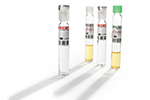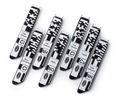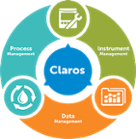-
Products
-
Lab Instruments
-
Lab Meters and Probes
Calibration Standards Sension+ Meters and ProbesOther Reagents
- Chemistries, Reagents, and Standards
-
Online Analysers
Ammonium Analysers Ammonia Monochloramine Analytical Shelters Chlorine Analysers
- CL17sc
- CL10sc Amperometric
- 9184 sc Amperometric
- Ultra Low Range CL17sc Colorimetric Chlorine Analyser
Ozone Turbidity AnalysersEZ Series Analysers- Iron
- Aluminium
- Manganese
- Phosphate
- Chloride
- Cyanide
- Fluoride
- Sulphate
- Sulphide
- Arsenic
- Chromium
- Copper
- Nickel
- Zinc
- Ammonium
- Total Nitrogen
- Total Phosphorus
- Phenol
- Volatile Fatty Acids
- Alkalinity
- ATP
- Hardness
- Toxicity
- Sample Preconditioning
- Boron
- Colour
- Nitrate
- Nitrite
- Silica
- Hydrogen Peroxide
- EZ Series Reagents
-
Online Sensors and Controllers
Digital Controllers (Transmitters) Controllers (Analogue)
- SC4500
- Orbisphere 366x Ex
- Orbisphere 410/510 Carbon Dioxide
- Orbisphere 410/510 Oxygen
- Orbisphere 410/510 Ozone
- Orbisphere 51x Hydrogen
- Orbisphere 51x Nitrogen
Multi-Parameter pH & ORP Sensors- 1200-S ORP
- 1200-S pH
- 12mm pH/ORP
- 8362 sc High Purity
- Combination pH/ORP
- Differential pH
- Digital Differential ORP
- Digital Differential pH
- LCP ORP
- LCP pH
Conductivity Sensors- 3400 Analogue Contacting
- 3400 Digital Contacting
- 3700 Analogue Inductive
- 3700 Digital Inductive
- 3798 sc Electrodeless
- 9523 Cation Conductivity
- 9525 DCCP System
-
Automated Lab Systems
Automatic Laboratory Analyser
- Multiparameter Online Panels
- Claros Water Intelligence System
-
Lab Equipment and Supply
Apparatus
- Brushes
- Clamps, Rings & Stands
- Crucibles
- Crucibles & Casseroles
- Dispensers & Droppers
- Grab Samplers
- Oil and Grease
- Other Apparatus
- Pipet Aids
- Pipettes
- Racks
- Stir Bars
- Tubing
- Weighing Accessories
General Lab Consumables Glassware/PlasticwareInstruments -
Microbiology
Accessories and Chemicals Dehydrated MediaLabware
- Accessories
- Funnels, Pumps & Manifolds
- Microbiology Filters
- Petri Dishes & Accessories
- Sampling Bags
- Vials, Tubes, Bottles & Racks
- Samplers
-
Test Kits & Strips
Test KitsSingle Parameter Test Kits Test Strips
-
Hach eLearning
Lab Product Training Process Product Training
- AN-ISE sc
- Amtax sc
- B3500
- B7000
- CL17sc
- Differential pH Sensor
- Filtrax Sample Filtration Systems
- LDO sc
- Nitratax sc
- Orbisphere 6110
- Phosphax sc
- SC1000
- SC200
- SC4500
- Solitax sc
- TU5300sc/TU5400sc
-
Lab Instruments
-
Parameters
-
-
Software Solutions
-
Claros Water Intelligence System
Product Pillars Process Management
- Solutions For:
- BOD/COD Removal
- Nitrification/Denitrification
- Phosphorous Removal
- Sludge Management
Data Management- Solutions For:
- Collection
- Visualization & Analytics
- Reporting
- Data Accuracy
Instrument Management- Solutions For:
- Maintenance
- Troubleshooting
- Remote Access
- Lab and Process Comparison
Industry Challenges Regulatory Compliance Cost Savings Remote Operations Process Optimisation Equipment MaintenanceClaros News Claros Software Release Notes
-
Claros Water Intelligence System
- Industries
- Service
- News & Events
Product News | All News
Southern Water Utilises HACH LANGE Instruments For Monitoring Effluents
June 28, 2013
The online monitors are comprised of a HACH LANGE turbidity probe with sensors for temperature and level
Southern Water operates 370 wastewater treatment plants (WWTP), many of which are unmanned for most of the time and most have numeric environmental permits, so a network of online monitors has been established to improve treatment and protect discharge compliance. This has involved the installation of final effluent monitors at over 300 sites in a programme that has lasted for more than ten years.
The online monitors are comprised of a HACH LANGE turbidity probe with sensors for temperature and level (to show when the turbidity probe is out of the water) and mounted on a plastic ‘spade’ which holds the sensors in position at the final effluent monitoring point.
Using turbidity to estimate BOD and TSS
As a measure of clarity, turbidity provides extremely useful data; a cloudy final effluent suggests poor treatment and possible discharge permit failure.
In 1993 Southern Water conducted an extensive research project to demonstrate that effluent clarity, as measured by turbidity, can be related on a site by site basis to permitted BOD (Biological Oxidation Demand) and TSS (Total Suspended Solids).
The constituents of final effluent are such that biological slimes and algae are prone to develop on optical surfaces, and the trials therefore concentrated on the most efficient method of probe cleaning. Probes with no automatic cleaning were therefore eliminated. The technically preferred monitor was the HACH LANGE Solitax turbidity probe, which incorporates a silicon rubber wiper, which sweeps over both optical surfaces at a programmable frequency. Southern Water also found that the cleaning efficiency was improved by the addition of an air purge which blows away the loosened solids.
The Solitax probes use a single LED light source with three detectors, one for light intensity and two for light scatter. HACH LANGE’s Clive Murren says “This provides reliable colour-independent readings with a low maintenance requirement. However, we have a contract to routinely visit each site to service and calibrate the turbidity sensors.”
HACH LANGE has confirmed that the SC200 and SC1000 HACH LANGE controllers and the SOLITAX sc turbidity probe were awarded MCERTS certification on 1st November 2012. MCERTS is the Environment Agency’s monitoring certification scheme and currently only a small number of analytical instruments have achieved this award. However, an MCERTS certificate demonstrates that equipment has met or exceeded the stringent performance requirements of the scheme.
The monitor control unit is mounted in a separate cabinet which also houses the air compressor. When the plc calls for a clean, the wiper operates followed by two air purges which release the algae/biofilm. A further wipe then removes any remaining material.
Cleaning is initiated every hour and, when a clean is called for, the last recorded turbidity reading is held in the monitor for 5 minutes, to avoid recording the false turbidity generated by the loosened material.
Design and Installation
Linton Electrical Contractors (Kent) Limited has a longstanding relationship with Southern Water and was responsible for the final design and installation of the final effluent monitoring systems. Subject to prior approval by Southern Water, the installations incorporate the latest HACH LANGE instrumentation as it becomes available.
Linton Electrical is now installing as standard the 110V MKV SC200 controller and occasionally the MKVI SC1000. Each system is complete with conductivity sensor, level sensor, temperature probe and air cleaning system; all of which is mounted on a PVC spade.
Linton’s Mark Pendry says “The project has been very successful because we have established the skills, tools and spares to ensure that every installation is conducted quickly and efficiently and the quality of the HACH LANGE instruments ensures reliability and accuracy.”
One of the advantages of the SC controllers is the ability to add additional instruments and Clive Murren says: “The facility to add the Nitratax nitrate probe saves time and money when using this platform, because it utilises the same spade design as the turbidity sensor and several of the latest installations have also incorporated the nitrate probe.”
Processing of Data
The WWTP telemetry outstation scans all connected monitors every second. The outstation calculates 15 minute averages (or in the case of temperature takes a 15 min spot reading) and relays the data by a phone line to a central processing unit known as SCOPE. The SCOPE data is available to the Regional Control Centre and local PCs.
The system serves as a single source of process data with automatically generated performance indicators that allow exception notification and strategic analysis.
An important functionality of the System is Exception Reporting. This function compares the recently archived value with a limit value and generates an Exception Report if the value is out of range. The Exception Report, as an email, is sent to selected recipients.
An Operational Database has been designed to hold asset dimensions and other site details (current operational units and trigger (limit) values) which are used in the calculations.
Reporting of Data
A relationship has been established between the sum of the spot sample TSS + BOD and archived turbidity.
The turbidity relationship is used to determine a turbidity level equivalent to the sum of the permitted BOD + TSS. This turbidity ‘permit’ equivalent is used by Southern Water in three ways:
1. 80% of the ‘permitted’ turbidity is used in the outstation to generate an alarm in SCOPE if the 15 minute mean turbidity exceeds the ‘permitted’ turbidity for more than a chosen time span. This may be instantaneous or up to 2 hours depending on the environmental significance of the discharge. A high priority alarm is then issued to the site/standby Operator who will visit the site and take appropriate action.
2. The Process Management System generates an Exception Report by email to selected recipients if the daily average turbidity held in the derived values archive exceeds 80% of the ‘permitted’ turbidity.
3. Each Exception Report generated is investigated by the Process Scientist and an ‘Exception Reason’ is chosen from an agreed list of 43 operational and environmental causes of high turbidity - ranging from storm conditions and mechanical failure to equipment malfunction and vandalism. These reasons are then summarised and used for Business Intelligence purposes. In this way Southern Water is monitoring performance of all WWTPs against a continuously monitored parameter in addition to the compliance statistics generated by spot sampling.
Benefits of on-line monitoring
The installation of on-line monitors has encouraged a proactive response to system deterioration, which has resulted in a significant reduction in staff time associated with operational management of the wastewater assets. Non-routine site visits by Operational Staff have been reduced, and Wastewater Support Staff can target their site visits to WWTPs with poor performance as identified by on-line monitors.
The plant performance data has been improved with the use of 35,040 readings at fifteen minute intervals per monitor per year. The consequences have been protection of compliance and the identification of optimisation opportunities.
Routine final effluent sampling has been substantially reduced, resulting in considerable savings in sampling and analytical costs.
Real-time access to turbidity data also helps troubleshooting. For example, high turbidity values can indicate filter rotation problems, hydraulic/organic overload, final tank scraper failure, secondary treatment bypass or tertiary treatment failure.
In addition to the benefits from early warnings of poor quality effluent and the ability to show deteriorating trends, compliance levels have been maintained at around 98% since installation of the monitors began.
If you have any questions or are interested in this product, please contact us:
Tel.: 0161 872 1487
Email: sales@hach-lange.co.uk






